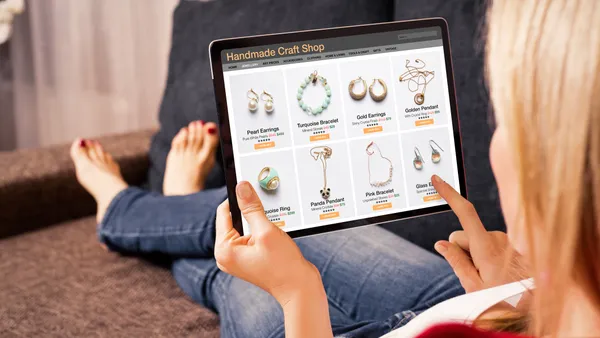The race is on to please customers by giving them their online orders as quickly as possible. Amazon Prime's free two-day shipping seemed like a nice perk of the membership, but then along came same-day delivery. Last week, both Google and Amazon notched many headlines in retail business news with their announcements of same-day delivery services expansions.
Dense, urban areas are probably the most obvious places where same-day delivery services would thrive, and, for the most part, that's where it's being tested. Incomes tend to be higher for city dwellers, who might be willing to pay for such immediate gratification. And public transportation is more often a preferred mode of travel, making it a pain to shop for more than a small bag of groceries.
Yet Kozmo, a prominent same-day delivery service of the 1990s dot.com boom, never did better than breaking even in New York City — a place where delivery services of all kinds thrive. In fact, it went bust by 2001, as so many pie-in-the-sky ventures of that era did.
But Kozmo is back, and some say its time has come.
In addition to Amazon.com, Wal-Mart Stores Inc., eBay Inc., and other retailers are testing or expanding same-day delivery. In addition, courier start-ups are proliferating and enabling more retailers to offer the service, including Uber's UberRUSH, Postmates, Deilv, Zipments, and InstaCart, not to mention shippers like the U.S. Postal Service, UPS, and FedEx, and, of course, Google's Shopping Express.
With same-day delivery hotter than ever, there remains one burning question: Why?
Same-day delivery is not a consumer priority
A survey by The Boston Consulting Group found last year that free and low-cost delivery is more important to consumers than same-day delivery of online orders.
A mere 9% said same-day delivery would improve their online retail experience, that study found. 74% said free delivery and 50% said low prices were important. Perhaps the companies investing in launching and expanding same-day delivery are focused on the one group of consumers that are indeed likely to use the service: millennial consumers who also make more than $150,000 a year. Although their online spending is more than twice that of the average American shopper, it's still only 2% of the market, according to the report.
The limits of same-day delivery
Details of same-day delivery are still shaking out as the competition fires up, but most require early-in-the-day orders, as early as 8:00 a.m., and charges of $6 to $10 per order. There are also minimum orders from some retailers. Plus, the service is often limited to select items, and the same-day delivery order process isn’t always easy to navigate. Google’s Shopping Express is free during a six-month trial period, but will go up to $5 per store order.
The costs of same-day delivery
Amazon is generally regarded as the current instigator of today’s same-day delivery enthusiasm. To help facilitate this service, its broader free two-day Prime deliveries, and its expanding Sunday delivery, the e-retail giant has beefed up its fulfillment system. Amazon is continuing to establish more warehouses in more areas across the country, and its operations are becoming infamously efficient.
That level of efficiency is leading to stories about hard-core worker policies at its warehouses that are garnering the company a lot of bad press and, in some cases, lawsuits.
Millennials are reportedly among the most compassionate of consumers. If millennials (at least the wealthiest ones) are truly the target market for these intense delivery services, poor treatment of workers to make those services possible may not sit well in the long run.
It’s hard to know if the intensifying competition in the same-day delivery game will last, for that and other reasons. In the end, if it survives at all, it may end up a side option for many retailers and couriers.
"Same-day delivery will be a niche service in the near future," says Rob Souza of The Boston Consulting Group. "Retailers may choose to offer it to build customer loyalty, enhance brand awareness, or keep up with the competition. But it is unlikely to generate significant revenues for either retailers or carriers.”
Would you like to see more retail news like this in your inbox on a daily basis? Subscribe to our Retail Dive email newsletter! You may also want to read Retail Dive's look at the "Made in America" label.












